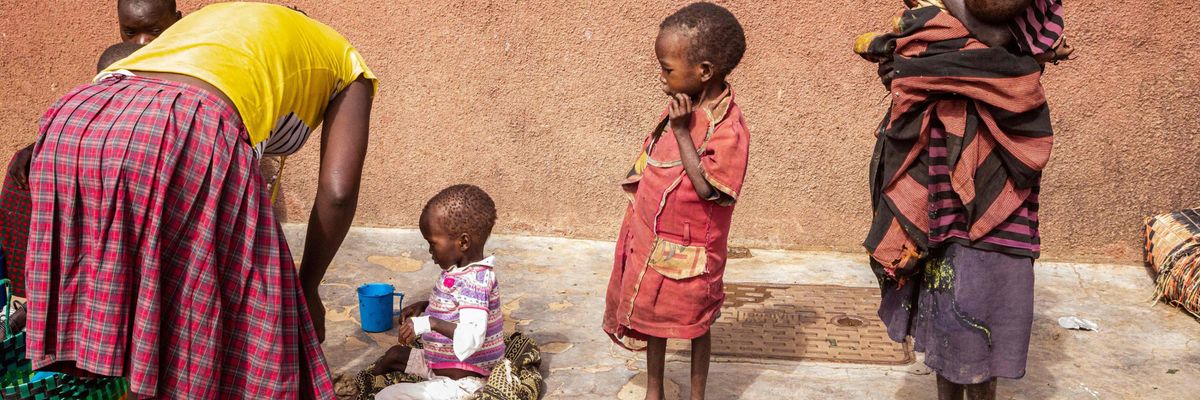The world is confronting multiple, compounding crises, from COVID-19, energy, inflation, debt, and climate shocks to unaffordable living costs and political instability. The need for ambitious action cannot be greater. However, the return of failed policies such as austerity, now called “fiscal restraint” or “fiscal consolidation,” and a lack of effective taxation and debt-reduction initiatives threaten to exacerbate the macroeconomic instability and daily hardships that billions of people are facing. Unless policymakers change course, an “austerity pandemic” will make global economic recovery even more difficult.
As we show in a recent report, the looming wave of austerity will be even more premature and severe than the one that followed the 2008 global financial crisis. An analysis of IMF expenditure projections indicates that 143 governments will cut spending (as a share of GDP) in 2023, affecting more than 6.7 billion people – or 85% of the world population. In fact, most governments started scaling back public spending in 2021, and the number of countries slashing budgets is expected to rise through 2025. With average spending cuts of 3.5% of GDP in 2021, this contraction has already been much bigger than in earlier shocks.
Even more worryingly, upwards of 50 countries are adopting excessive cuts, meaning their spending has fallen below their (already low) pre-pandemic levels. This cohort contains many countries – including Equatorial Guinea, Eswatini, Guyana, Liberia, Libya, Sudan, Suriname, and Yemen – with large unmet development needs.
The austerity measures that governments are considering or already implementing will be deeply harmful to their populations, and especially to women. Governments are planning to limit social protections for vulnerable populations; cut programs for families, the elderly, and people with disabilities; slash or cap the public-sector wage bill (implying a reduction of frontline workers like teachers and health personnel); eliminate subsidies; privatize transportation, energy, and water services; cut pension benefits; reduce labor protections and employers’ social-security contributions; and decrease health expenditures.
In parallel, many governments are adopting short-term revenue-generation strategies that will also have detrimental social effects. These include increasing consumption taxes – such as regressive sales and value-added taxes (VAT) – strengthening public-private partnerships, and increasing fees for public services.
Just in eastern and southern Africa, UNICEF finds that Eswatini (formerly Swaziland), Kenya, Madagascar, Rwanda, and South Africa are considering or implementing three categories of austerity measures, while Lesotho is pursuing four categories, and Botswana five. Botswana, Kenya, Madagascar, Rwanda, Uganda, and Zambia are each applying four or more categories of measures to boost revenue. Including spending cuts and tax increases, Botswana, Kenya, Madagascar, Rwanda, and Zambia are each considering at least seven categories of austerity measures that are known to have adverse social impacts.
Not only are these governments pursuing painful austerity at a time when the region is dealing with unprecedented droughts and a cost-of-living crisis. They also are showing little willingness to adopt policies – such as higher tax rates for corporations and wealthy individuals – that are critical to reducing their already-high levels of inequality.
Unless austerity is reversed, people in developing countries will lose social protections and public services just when they are most needed. According to Oxfam, almost half of the global population is already living on less than $5.50 per day. And, lest we forget, trillions of dollars have been mobilized since the start of the pandemic to support corporations, while ordinary people have borne many of the costs of adjustment.
The dangers of an aggressive austerity approach were made clear over the past decade. From 2010 to 2019, billions of lives were upended by cuts to pensions and social benefits; lower investments in programs for women, children, and the elderly; fewer and lower-paid teachers, health, and local civil servants; and higher prices from basic consumption taxes.
It doesn’t have to be this way. There are alternatives to austerity. Even in the poorest countries, there are at least nine other financing options that some governments have been using for years, and that are fully endorsed by the United Nations and international financial institutions. These include progressive taxation; debt elimination or restructuring; clamping down on illicit financial flows; increasing employers’ social-security contributions and coverage by formalizing workers in the informal economy; using fiscal and foreign-exchange reserves; re-allocating public expenditures; adopting a more accommodating macroeconomic framework; securing official development assistance; and new allocations of the IMF’s reserve asset, special drawing rights.
Since fiscal decisions affect everyone, they should be made not behind closed doors, but through inclusive and transparent national dialogues that include trade unions, employer federations, and civil-society organizations. Governments must abandon austerity measures that benefit the few at the expense of the many. Only by exploring alternative approaches can we support people and get back on track to achieve the UN Sustainable Development Goals. The world is still suffering one kind of pandemic. There is no need for another.

